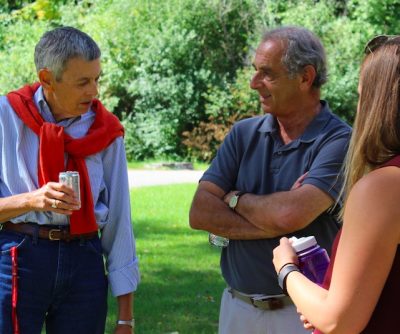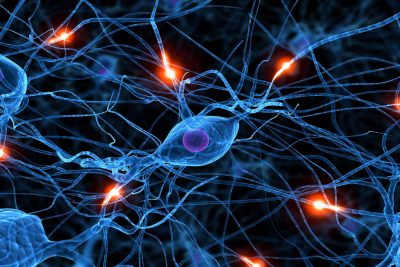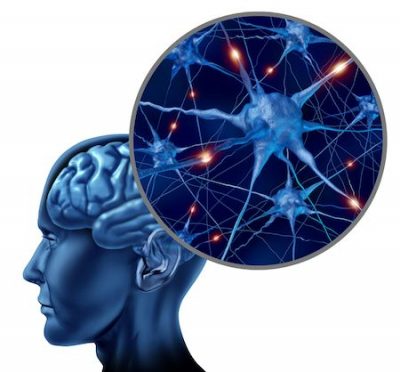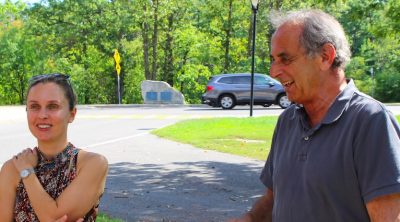 Hymie Anisman, Department of Neuroscience
Hymie Anisman, Department of Neuroscience
By Ariel Root
Apply 60 different stressors for half a second each over a one-hour period, and the test animal will appear to be resigned to its fate. Okay. What about applying the same stressor to humans, for 24 hours, every day, for five years? Maybe 80% of those tested might show depressive-like behaviours, but what about the 20% that don’t; what is it about those 20% that make them resilient? How come they can survive greater stressors, and not only survive, but in some cases, flourish? What makes some individuals so resilient, and others so vulnerable?
In the early 1970’s, Hymie Anisman remembers researchers investigating the effects of traumatic events on humans or animals, and asking why they develop feelings of depression. “While that was interesting, it was the wrong question. The question shouldn’t be why [people] fall into a depression, but why didn’t everybody fall into this state?… but of course, that’s very difficult to answer.”
Anisman was a Canada Research Chair in Behavioural Neuroscience, and continues as a Professor in the Department of Neuroscience investigating the influence of stressful events on neurological and immunol ogical changes. He has partnered with researchers internationally, as well as with those from the Royal Ottawa’s Institute of Mental Health Research (IMHR). Using animal models, Anisman and his collaborators are able to introduce a particular social stressor (e.g., a bully, a new environment), observe the resulting behaviours, and link anxiety- or depressive-like behaviors to neurochemical changes in the brain. “Neurotransmitters are signaling molecules, and they can cause other neurons to fire, or stop firing.” This cascade of signals is a complicated process, but Anisman observes these processes, striving to link the release of certain chemical compounds to specific behaviours.
ogical changes. He has partnered with researchers internationally, as well as with those from the Royal Ottawa’s Institute of Mental Health Research (IMHR). Using animal models, Anisman and his collaborators are able to introduce a particular social stressor (e.g., a bully, a new environment), observe the resulting behaviours, and link anxiety- or depressive-like behaviors to neurochemical changes in the brain. “Neurotransmitters are signaling molecules, and they can cause other neurons to fire, or stop firing.” This cascade of signals is a complicated process, but Anisman observes these processes, striving to link the release of certain chemical compounds to specific behaviours.
At the beginning of his career, Anisman was involved in the discovery of the multi-hit hypothesis notion, whereby re-exposure to the same, or a similar, stressor can elicit neurological changes at a greater level compared to the first exposure. This discovery was also paired with the suggestion that in many cases, illness development related to depression or addiction is often a result of combination of the stressor, genetics, or early life trauma. This notion of “priming was a big deal, [and one] of the most rewarding findings” for Anisman.
Since then, Anisman has also participated in research regarding the effects of stress on inflammatory processes, particularly as they relate to cytokine activation and distribution. While cytokines are activated under stressful conditions, and intend to be helpful, in high concentrations they can be damaging, and are linked to stroke, diabetes, and depression. “In all cases, inflammation is the common denominator, and can make you more vulnerable” to developing one or more of the other diseases.
 Anisman indicates that “brain regions speak to other parts of the brain, but the brain also speaks to other parts of the body… and [I] believe that there is a link between the immune system and the brain.” Through collaboration with researchers at the IMHR, Anisman is researching the effects of various stressors on the gut microbiome following introduction of antibiotics, probiotics, or prebiotics. He is specifically wondering, “if we manipulate the gut, how [could this] affect the immune response, and how could that affect the brain?” The collaborative team is first trying to determine if there is, in fact, a relationship between the gut bacteria and mood states, and if this relationship can be altered through diet or modified gut biome factors.
Anisman indicates that “brain regions speak to other parts of the brain, but the brain also speaks to other parts of the body… and [I] believe that there is a link between the immune system and the brain.” Through collaboration with researchers at the IMHR, Anisman is researching the effects of various stressors on the gut microbiome following introduction of antibiotics, probiotics, or prebiotics. He is specifically wondering, “if we manipulate the gut, how [could this] affect the immune response, and how could that affect the brain?” The collaborative team is first trying to determine if there is, in fact, a relationship between the gut bacteria and mood states, and if this relationship can be altered through diet or modified gut biome factors.
Anisman has become particularly interested in the human resilience spectrum and to what extent resilience is influenced by psychosocial factors, such as community, religion, or relationships. “Vulnerability and resilience are not two ends of a continuum,” he explains. “If you are very well connected, or have a very good social group, you can cure certain types of conditions. So what are the factors that make a person more or less resilient? What are the genetic factors? The personality factors?” And, while a traditional rodent model can enable observations of hormonal changes in the brain, they are not always ideal for these streams of research, introducing new challenges for Anisman’s research.
 Collaborations within Carleton, the IMHR, and with international partners has been rewarding for Anisman. He acknowledges the importance of interdisciplinary teams. “If everybody knew everything, we wouldn’t need teams; interdisciplinary teams allow us to do things we wouldn’t be able to do otherwise.” Venturing into research dealing with the microbiome, Anisman has teamed with other affiliate researchers of the CHAIM centre to enable research regarding psychosocial stressor response and resilience, and early childhood development. “When you have research partners who you can trust, and who know things you don’t, together, with a degree of overlap, you can come up with exciting projects.”
Collaborations within Carleton, the IMHR, and with international partners has been rewarding for Anisman. He acknowledges the importance of interdisciplinary teams. “If everybody knew everything, we wouldn’t need teams; interdisciplinary teams allow us to do things we wouldn’t be able to do otherwise.” Venturing into research dealing with the microbiome, Anisman has teamed with other affiliate researchers of the CHAIM centre to enable research regarding psychosocial stressor response and resilience, and early childhood development. “When you have research partners who you can trust, and who know things you don’t, together, with a degree of overlap, you can come up with exciting projects.”
For Dr. Anisman’s contact information, go here.